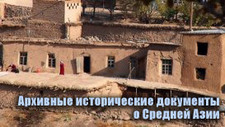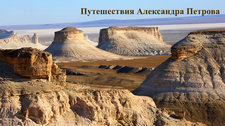You are here
Karkaraly lakes.
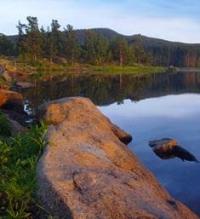
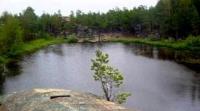
Tours from Karaganda to Mangyshlak.
"Karkaraly Mountains have exactly the same character as the Bayan-Aul Mountains: they also consist of pink granite boulders clad in moss and gray lichen, and their main range is covered with pine forest. The so-called Bassein and the Devil's Lake are particularly famous for their beauty in the mountains."
N. Ya. Konshin. "From Pavlodar to Karkaraly." 1901.
Tours from Karaganda to Balkhash lake.
Karkaraly Mountains are famous for their lakes, which can be divided into two types: steppe and mountain. The first group includes Zhartas, Ashikol, Shangel, Bastybay, Koytas, Taskol, Shalkarbay, and others. They are highly saline and stand out among the yellow hills with a white salt coating on their shores.
Devil's Lake, or Shaitankol, in the steppe lowlands is considered a mountain lake. Everything, both the lake itself and the surrounding forests, are beautiful, oozing the mystery of ancient legends. The first group includes lakes located in the vicinity of the mountain range at a distance of 10 - 20 kilometers.
Many of them dry up in dry years. The second group consists of five lakes in the Karkaraly pine forest: Bolshoe and Maloe Shchuchye, Pashennoe, Shaitankol (Devil's Lake), Bassein and Moldir lake in Shankoz mountains. The first three lakes lie in valleys at the foot of the mountains and are fed by underground springs in addition to precipitation.
Devil's Lake rests in a basin surrounded by a series of hills, and its basin is hidden in a crevice of a lonely, isolated peak. The most beautiful lake is Shaitankol. A health complex, a three-story, light-colored building owned by the Karaganda miners "Shakhtyor," has been built on the shore of Lake Pashennoe.
Lake Bolshoe Shchuchye is located at an altitude of 825 meters above sea level; from the top of a nearby hill, the lake and the city are visible - it offers excellent swimming. The lake covers an area of 2.68 square kilometers, with a shoreline of 7.38 kilometers. It measures 2.3 kilometers from southeast to northwest, is 2 kilometers wide in the central part, and is approximately 4.6 meters deep. Lake Bassein is also of interest and beauty.
Lakes of Karkaraly National Nature Park.
Karkaraly National Nature Park is not only a realm of granite mountains and pine forests, but also a stunning land of lakes. Here, in the heart of the eastern Kazakh Uplands, you can find mountain basins nestled in rocky basins and tranquil steppe stretches stretching at the foot of the hills.
The lakes of Karkaraly are inextricably linked with the region's geology and climate: they were formed as a result of ancient tectonic movements, glacial processes, and water erosion. Mountain-forested lakes of the Karkaraly oasis. The most famous and picturesque bodies of water are located in the central and eastern parts of the Karkaraly mountain range.
One of them, Lake Shaitankol, or "Devil's Lake," lies in a rocky basin amid a pine forest, 7 kilometers southeast of the town of Karkaraly. Its steep, rocky shores are in places, and the water is remarkably clear and cold, even on a summer afternoon.
The lake is up to 14 meters deep, fed by springs and precipitation. A well-known legend is associated with the lake: once upon a time, a young man and woman, unwilling to part, jumped into the water in these parts, and since then, Shaitankol has seemingly guarded their secret.
Locals say the lake has no bottom, and at night a mysterious splashing sound can be heard from it - the breathing of the mountain spirits. Lake Pashennoye, located just to the north, 3.5 kilometers from Karkaraly, is no less interesting in its origins. Its rounded shape and smooth shores suggest an ancient tectonic origin.
In summer, the water warms up quickly, making the lake a popular swimming spot. Pine and birch groves can be found in the surrounding area, blueberries and cloudberries grow on the mountain slopes, and the morning air is filled with the scent of pine needles.
Slightly to the east, beyond the Tasbulak Pass, lies Lake Bassein – a small but deep lake surrounded by granite ramparts. Due to the closed basin and weak runoff, it has a higher mineral content. Herons and ducks are often seen here; it is a favorite spot for waterfowl.
Lakes of foothill and steppe plains of Karkaraly Oasis.
To the southeast of the mountain range begins a series of steppe basins with large bodies of water. The most famous of these is Lake Kimassarovskoye, located 14 kilometers from Karkaraly. It is long and shallow, with marshy shores, surrounded by a grassy steppe.
Ducks, geese, and whooper swans often nest here. In spring and fall, the lake becomes an important staging post for migratory birds. According to local legend, the camp of the Bai Kimassar once stood on its shores, and in the center of the lake, on a small sandbar, stones from an ancient sanctuary are supposedly still visible.
On the northwestern slopes of the Karkaraly Mountains are other small bodies of water - Kokzhar, Zhartas, and Shunkar - which are fed by rain and spring water. In winter, they freeze completely, and in summer, they often dry up. However, it is these temporary lakes that create favorable conditions for steppe plants and animals.
Seasonal Features of Karkaraly Park.
Karkaraly's climate is continental, with cold winters and hot summers, which directly affects the lakes' water regime. In winter, most lakes freeze to the bottom, with the exception of deep lakes such as Shaitankol and Bassein, where unfrozen springs remain.
In spring, during the snowmelt, the water level rises by 0.5 - 1 meter. In summer, especially in July and August, evaporation occurs, and some small bodies of water become significantly shallower. In autumn, the waters become clear and cool again, reflecting the crimson slopes of Karkaraly's pine forests.
Lakes as tourist and scientific attractions of Karkaraly Park.
Today, the Karakaralinsk Lakes are not only an important part of their natural ecosystems but also popular tourist destinations. Ecological trails lead to each of the major lakes: Shaitankol is approximately 7 kilometers long, Pashenny is approximately 3 kilometers long, and Kimassarovskoye can be reached by road, with an additional 1.5 kilometers of walking to the observation deck.
Lake Bassein has two routes: the first is from the checkpoint and barrier of the Sosnovy Bor holiday home, a 2.7-kilometer route, and the second is from the Karkaraly ski resort, located on the western outskirts of the village of Karkaralinsk, a 3.2-kilometer route.
These places are also of interest to scientists - hydrologists, geomorphologists, and biologists. The water in mountain lakes is soft and slightly mineralized, while steppe lakes are often brackish and serve as indicators of regional climate fluctuations.
Lakes of Karkaraly National Park are mirrors of mountains and time.
Karkaraly National Park is a land where water preserves the memory of the mountains, and the mountains reflect the sky. Numerous lakes, scattered among pine forests and granite domes, like pearls set in rocky cliffs, form the park's amazing water system.
Some are deep and mysterious, like Shaitankol, others are open and steppe-like, like Kimassarovskoye, and still others are tiny, lost among the rocks and springs of Tasbulak. Each lake has its own character and legend. Their quiet waters reflect centuries - from ancient times, when nomads and shamans came here, to the present day, when travelers and photographers flock here.
In summer, the lakes beckon with the coolness and scent of pine tree crowns; in autumn, with the golden glow of foliage; in winter, with the crystal silence and silent sparkle of snow. Walking along the "Lake Ring" trails, travelers feel like they're reading a living book of nature, where each path tells its own story - of the wind, water, and light that created this amazing corner of Kazakhstan's low hills.
Hiking trails along lakes of Karkaraly National Park.
1. Three Lakes Trail (Pashennoye - Shaitankol - Bassein).
Length: approximately 10 kilometers.
Travel time: 4 - 5 hours (roundtrip, including stops).
Route type: hiking, moderate difficulty
The route begins at the park entrance, from where the trail enters a pine forest and emerges at the first point - Pashennoye Lake. From here, the climb continues along a picturesque granite slope to Lake Shaitankol, nestled in a rocky basin among centuries-old pine trees.
Along the way, you'll encounter springs and observation platforms with panoramic views of Karkaralinsk. The final section of the trail leads to Lake Bassein, nestled between gray granite ridges, is an ideal spot for relaxation and photography. According to legend, three lakes are connected by underground streams, and at dawn, a light mist can be seen rising from all three simultaneously.
2. Kimassar Lake Ring.
Length: approximately 14 kilometers.
Tour time: 5 - 6 hours.
Route type: combined (hiking and driving)
The route begins in the village of Karkaralinsk and heads southeast to Lake Kimassarovskoye, a large body of water on the border between the mountains and the steppe. Along the way, sweeping panoramas of the Kokshetau Range and Komsomolsky Peak open up.
Rest areas and birdwatching spots are located near the lake. In the spring and fall, migratory swans and ducks can be seen here. Locals say that ancient stone slabs were once found in the depths of Lake Kimassarovskoye – supposedly the remains of an ancient altar dedicated to the spirits of water.
2. Tasbulak Springs Trail – a path to mountain springs.
Length: 6 - 7 kilometers.
Tour time: 3 hours
Route type: walking, suitable for the whole family.
The trail starts from the Karkaraly Park Nature Museum, located in the Tasbulak tract, and follows spring streams flowing into several small mountain lakes. Along the way, you'll encounter pine groves, rock outcrops, and traces of old forest fires.
The water in the lakes is crystal clear, with a cool sheen, even in summer. Partridges and squirrels can often be seen scurrying along the trail. This place is especially beautiful in spring, when the streams come alive, the black grouse sing, and the mountain meadows are strewn with primroses.
3. "Lakes under Rocks" - a short route to foot of Kokshetau Mountains.
Length: approximately 5 kilometers.
Tour time: 2 - 2.5 hours.
Route type: short hiking trail
This route begins on the southern side of the Kokshetau ridge, near the old bridge over the Kalysh River. The trail passes through a light birch forest and comes to several nameless mountain lakes lying at the foot of granite domes. In calm weather, the mirror-like surface of the water reflects the blue peaks of Kokshetau, earning these lakes the nickname "the eyes of the mountains."
An old inscription is carved on one of the stones; according to legend, it is the remains of a camp left by geologists in the 1930s, who discovered the granite veins of Karkaraly.
4. A separate hike to Lake Bassein.
There are two routes to Lake Bassein: the first is from the checkpoint and barrier of the Sosnovy Bor recreation center, a 2.7-kilometer route. You can drive to the barrier of the recreation center, walk around the southern part of the recreation center through the forest, and then join the main trail, which starts on the western side of the recreation center and continues to Lake Bassein.
The second route starts from the Karkaraly ski resort, located on the western outskirts of the village of Karkaralinsk. This route is 3.2 kilometers long.
Practical tips for hikers in Karkaraly Park.
The best time to explore the lakes of Karkaraly Park is from late May to early September, when the trails are completely clear of snow and daytime temperatures range from 18 to 25°C. At this time, nature reveals all its diversity: the lakes are crystal clear, the air is filled with the scent of pine needles and steppe grasses, and the nights, especially in June, are filled with starry silence.
In early autumn (from late August), the waters of the mountain lakes become especially clear, and the shores take on ochre-gold hues. Those seeking secluded walks should avoid the July weekends - the hiking trails to Shaitankol and Kimassarovsky are most crowded at this time.
The winter months of December, January, and February reveal a completely different face of Karkaraly. The lakes are covered in thick ice, a light frost often hangs over the snow-covered cliffs, and the frosty air rings with silence. For winter hikes, prepare warm clothing and a thermos, and check trail conditions and the weather before setting out - temperatures can drop to -30°C.
When hiking in the park, it's advisable to wear comfortable trekking shoes, a hat, sun protection, and plenty of water. Even in summer, in the higher parts of the massif, the weather can change drastically - from warm sun to cool winds and rain - so a light jacket or raincoat is useful.
Camping is permitted only in designated areas near Tasbulak, the Kokshetau valley, and Lake Kimassarovskoye, where there are freshwater springs and rest areas. Hotels and guesthouses are located in and around the city of Karkaralinsk, making it convenient for planning radial routes through the park.
Photographers should plan their shoots for the morning, when fog hovers over the lakes and the water reflects the contours of the mountain pines. During the day, it's best to climb to the observation decks, where panoramas open up, revealing mountain and steppe lakes that look like the blue eyes of the Kazakh Uplands themselves.
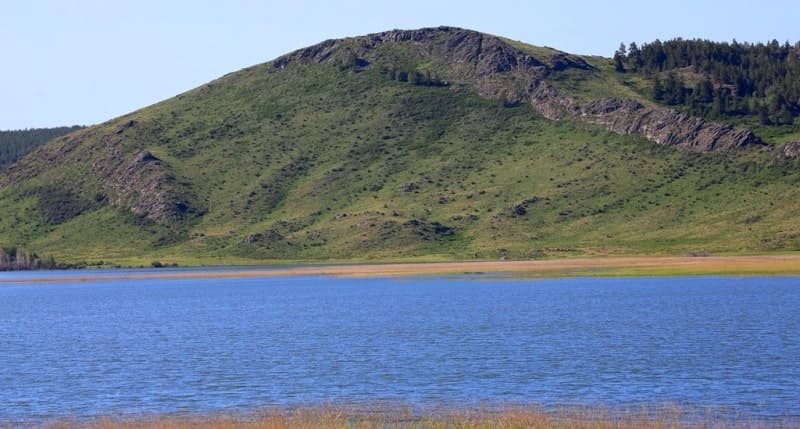
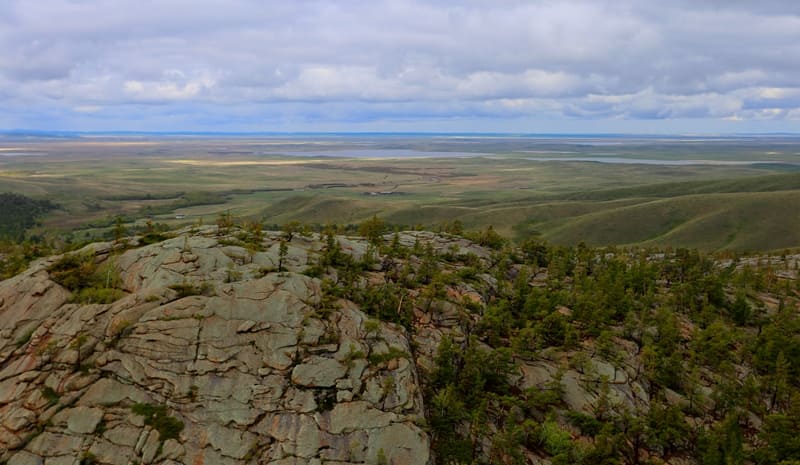
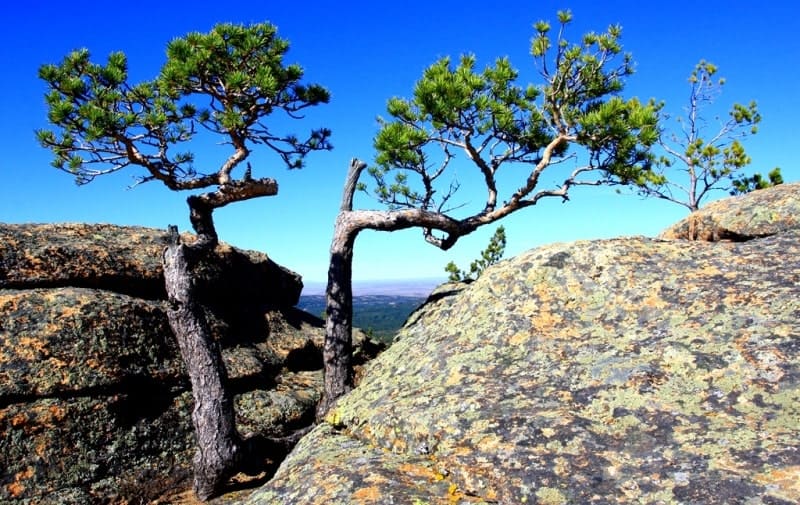
Authorit and photos by:
Alexander Petrov.





